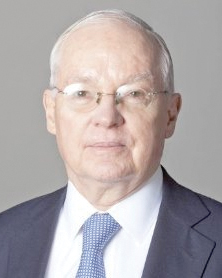
Local Law 88 – strategies for compliance; Start with the availability of utility funding - by George Crawford
Con Ed rebates make a difference. So does financing. Rebates and financing, combined with the substantial amount of energy savings baked into to every LED retro-fit, are your key ingredients for structuring the economics of any energy saving retro-fit. Gaining an understanding of how to effectively combine these components can also be the financial solution to addressing the substantial investment that will be required for Local Law 88 compliance – including the building-wide lighting upgrades required for commercial buildings that are 50,000 s/f or larger.
Local Law 88 (requiring sub-metering and energy efficient lighting in commercial buildings) was enacted in 2009 as part of the Greener Greater Buildings Laws – PlaNYC. The Greener Greater Building Laws were originally enacted with the goal of achieving significant levels of energy reduction by 2030. The provisions for sub-metering floor plates of 10,000 s/f or greater without direct tenant metering and the installation of energy efficient lighting are considered essential steps in achieving this city-wide energy reduction goal. While the January 1, 2025 deadline for the completion of the installation of sub-meters and energy efficient lighting may seem way out in the future, given the fact that it translates to less than a ten-year window – less than a ten-year commercial lease term, would suggest that it may not be too early to develop an action plan. Your action plan will need to address both the complexities of upgrading lighting in tenant spaces as well as the financing that will be required to fund compliance.
In terms of developing options to finance Local Law 88 compliance – start with the availability of utility funding. Con Ed ramped up their funding programs in 2014 with a goal of achieving a very substantial reduction in energy consumption – 600 MW to be exact. Initially some of their funding programs, including Demand Management, included very significant incentives covering the majority of the cost of commercial LED lighting projects. Back in 2014 this level of funding translated into very quick project paybacks – often less than a year. It offered buildings opportunities to both upgrade lighting in compliance with Local Law 88 as well as upgrade interior spaces in conjunction with these projects. While the Con Ed rebates are based on the amount of energy saved, the rebates themselves were so generous that the combination of the Con Ed funding and the energy savings realized from the LED retro-fits, covered costs for interior upgrades that went far beyond the lighting.
Today that economic model has changed. The mix is different - starting with the lower levels of Con Ed funding. Lower Con Ed funding levels, however, are now partially offset by the new generation of more energy efficient LED products. Some representative examples of this trend include the LED replacement tubes for the 40 Watt T 12 fluorescent. The first generation LED replacements for the T 12 achieved approximately a 50% reduction in energy consumption. Today the LED replacement for a T 12 now consumes only 30% of the energy of a T 12 fluorescent. Another example of the improvement in energy efficient LED products is the new TerraLUX retrofit engine. These LED engines are designed as retro-fits for multi-lamp incandescent fixtures. The first generation solution involved replacing the two or three 60 Watt incandescent lamps with two or three 9 Watt LED A19s - with a five year useful life. Today that same retro-fit consists of one 13 Watt engine with a seven year useful life. It is also important to note a parallel trend line. Along with improved efficiencies, the new LED products are more competitively priced than earlier generation products. So while Con Ed funding levels continue at lower levels, LED products are trending toward more energy efficiency and more competitive pricing as compared to earlier generation products.
So circling back to the question of a financial solution for Local Law 88 compliance – given the lower levels of Con Ed funding that will no longer “pay the bill” and the higher levels of energy savings from the newer LED products, it is our suggestion to continue sourcing the available Con Ed funding, but add to mix the monetization of the increased levels of energy savings. Financing your LL 88 compliance by monetizing your energy savings can be a simple and straight forward process from a variety of reliable lending sources. For expert advice, we reached out to Michael Weisberg of M-Core Credit Corp. who recommends that the financing be structured as a lease, instead of a loan because the lease structure will provide 100% of the up-front funding, but avoid conflicts with restrictive covenants related to loans and mortgages. For additional information about monetizing your energy savings, we suggest that you contact Michael Weisberg at [email protected]. He will walk you through the process which he describes as “simple, smooth and straight forward.”
We would also recommend reaching out to a Con Ed marketing partner to help with the coordination of your project, including your application for Con Ed funding as well as the sourcing of LED products that will qualify for Con Ed funding. The involvement of Con Ed along with a financial institution familiar with energy related financing will bring you the additional benefit of expert oversight for your project.
George Crawford is the principal of Green Partners, New York, N.Y.
